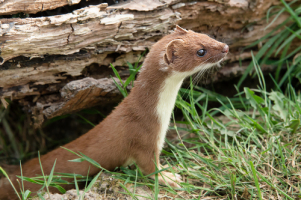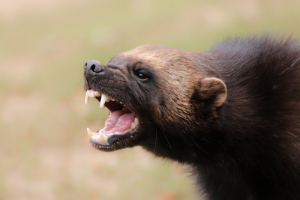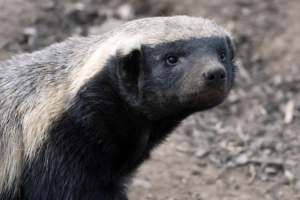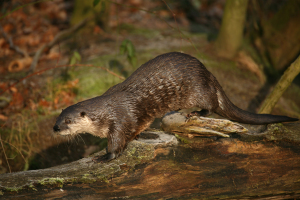


What do otters, weasels, and badgers all have in common? They are all members of the Mustelidae family. These carnivorous critters are known for their ability to catch prey and their distinctive body-types and coloration.
What kind of animals are Mustelids?
Mustelids are placental mammals in the family Mustelidae. They are the largest family in the Order Carnivora, which includes many other carnivorous (or meat-eating) species. The family has around sixty species across 22 genera. There is plenty of diversity within the group.
All members of the Mustelidae family share the same traits as all placental mammals: they are warm-blooded, they have special mammary glands that produce milk for nourishing their young, they are covered in fur, and bear live young.
What are the defining characteristics of Mustelids?
Like many animals that share the same family, mustelids have a wide range of variations. They range in size from 25 g (the least weasel) to over 45 kg (sea otters) and everywhere in between. Physical characteristics of mustelids include elongated, sleek bodies with short legs and a short rostrum (short snout). They are all covered in fur with short, round ears. Some have long tails while others exhibit short, stubby ones. Terrestrial mustelids are typically low to the ground, an adaptation that helps in the hunting of small prey like mice or rabbits.
Anal Scent Glands. With the notable exception of sea otters, all mustelids have small anal scent glands in the wall of the anal canal. These glands produce a strong-smelling secretion. It’s used for marking territory, providing identification among species members, and sexual signaling.
Claws. All mustelids have five digits on each leg, all with nonretractable claws. For most terrestrial species, this adaptation helps with hunting prey. For burrowing species (like badgers), they are enlarged for digging beneath the soil.
Locomotion. Mustelids are divided into four major types of locomotion. Some types of weasels (fishers, tayra, and martens) are partially arboreal and spend much of their time in trees. Badgers and wolverines have fossorial locomotion. This means they are mostly subterrestrial and spend much of their time burrowing and digging below ground. Conversely, mink are amphibious, spending time in both aquatic and terrestrial environments. Lastly, otters are partially or fully aquatic depending on species.
Diurnal & Nocturnal. Most members of Mustelidae are nocturnal or diurnal. They will hunt at night or in the early morning and at dusk. Many species are solitary, though some – like giant otters – may form social groups that do not interact with others.
Carnivores or Omnivores. They are largely carnivorous, eating meat or insects depending on their size. Their teeth are adapted for flesh tearing and they all have the presence of shearing carnassials, a trait found in most mammals in the Order Carnivora. They will occasionally eat vegetable matter. Some – like the otter species – are even piscivorous, eating mostly fish and crustaceans.
Where do Mustelids live?
Mustelids live on all continents except Australia and Antarctica. They also do not live on the island nation of Madagascar, which is home to a unique ecosystem all on its own, nor on any of the Oceanic islands. Mustelids have been introduced to New Zealand, however. They make their home in just about every environment. You can find them in diverse habitats from warm equatorial climates to colder northern terrain. They are also a family with species adapted to both terrestrial (weasels, badgers, etc) and marine environments (mink and otter species).
How many kinds of Mustelids are there?
There are between 56-60 species of mustelids in eight subfamilies spread across the world. They can be characterized into the following groups:
Weasels
Most often, the mustelid family is also known as the weasel family – and with good reason! True weasels are members of the subfamily Mustelinae. Technically, ferrets are a type of weasel. However, the domesticated weasel (also known as the European polecat) is the only species of mustelid currently domesticated by humans. They are often kept as pets.
Polecats
These are all members of the Ictonychinae subfamily! Most members share a characteristic mask-like bar or dark markings on their face, though their actual fur color can vary greatly by species. They also have a defensive mechanism activated in a strong-smelling chemical spray to avoid bigger predators.

Badgers
Badgers are classified in four subfamilies in the Mustelidae order. These are Helictidinae (ferret-badgers), Melinae (Eurasian badgers), Mellivorinae (Honey badger), and Taxidiinae (American badger). Badgers are largely fossorial, meaning they spend most of their time digging and burrowing beneath the ground. They have elongated, weasel-like heads with small ears. Badgers have black faces with distinctive white markings, as well as a light-colored stripe that follows the length of their dark gray bodies. Their tails vary in length depending on species from very short (the stink badger) to longer. A ferret badger’s tail can easily be 18-20 inches long!
Wolverines
Wolverines and martens belong to the subfamily Guloninae. They are mostly distributed across Eurasia and the Americas. Most of these species are arboreal, meaning they spend time in trees. They include the tayra, wolverine, martens, sable, and fisher. Some species in this subfamily – like the sable and marten – are harvested for their fashion furs.

Otters
All otters belong to the subfamily Lutrinae. Today, there are 13 extant species in this group! Otters are all semiaquatic, aquatic, or marine. Unlike most other mustelid species, their diets are primarily fish and aquatic invertebrates. While they have slim bodies and short limbs like weasels, they also have powerful webbed feet perfect for swimming. They can also hold their breath for long periods, giving them an advantage in fishing and diving. While most otter species are semiaquatic, sea otters can live fully in the ocean for their entire lives.
Fun Facts about Mustelids
• Ferrets are one type of mustelid that have been domesticated. While historically they were used for hunting, today they are mostly kept as pets. Domestic ferrets can be found all over the world, except Antarctica.
• Sea otters, one type of mustelid, eat 25 percent of their body weight in food every day. They can also hold their breath for over 5 minutes at a time.
• Sea otters are also one of the few non-primate species that use tools.
• A group of weasels is called a “boogle,” “confusion,” “gang,” or “pack.”
• While once considered a member of the family Mustelidae, skunks were recently reassigned to their own family, Mephitidae.
